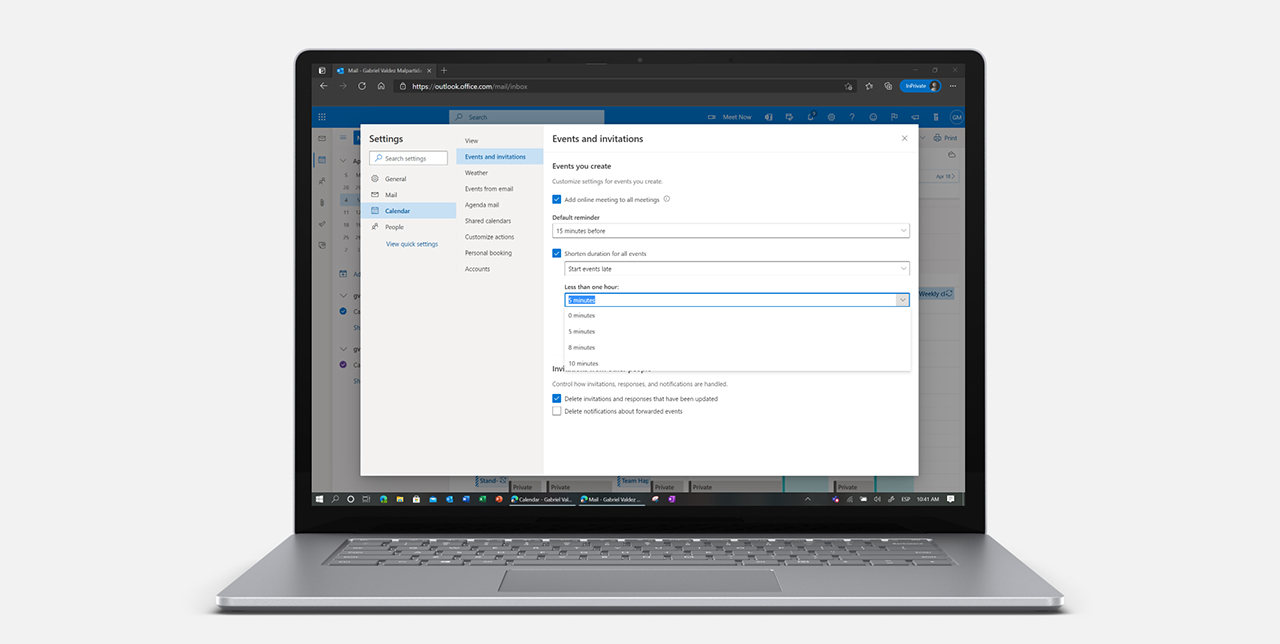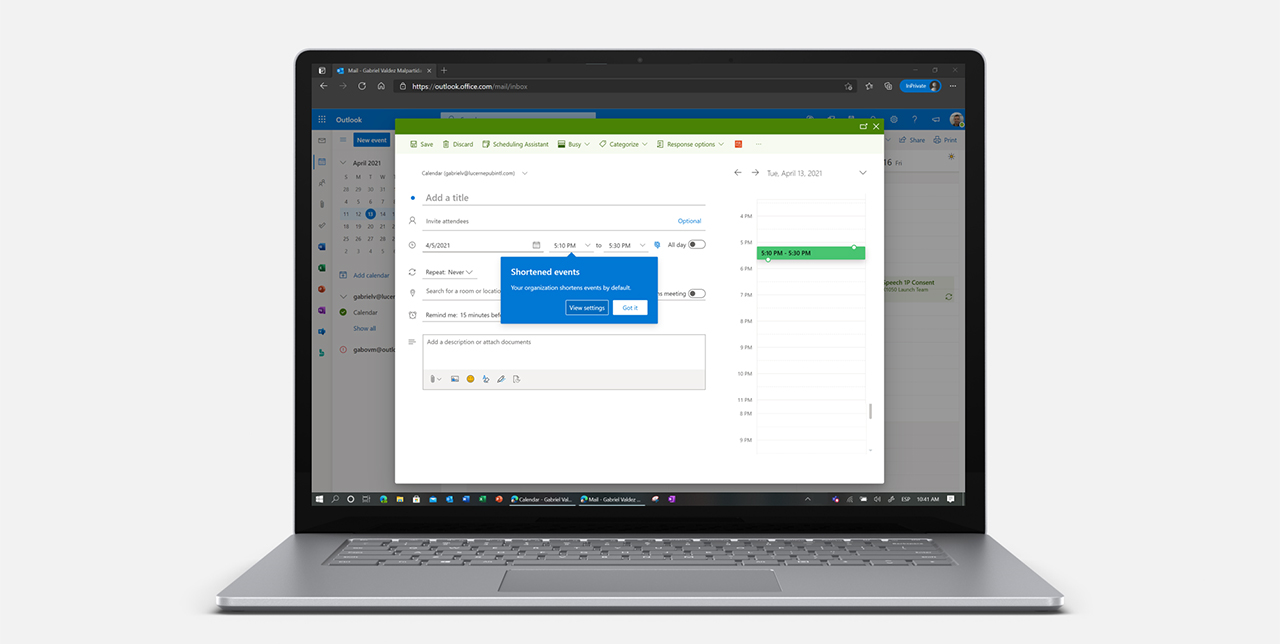
Microsoft is rolling out new tools in Outlook and Teams to help workers take breaks. The company based these tools on research, including a new [pulse report] and its first-annual ‘Work Trend Index’ report.
For Outlook, Microsoft will introduce a new automated tool that carves out space for breaks between meetings. The tool will offer up individual and company-wide scheduling settings that let workers and employers set time for breaks at the beginning or end of meetings. Additionally, users can customize the length of breaks. For example, a company could set 15-minute breaks at the start of hour-long meetings.

Once the scheduling settings are added, Outlook will automatically apply the settings to meetings. Individual employees can customize the company-wide settings as well, making the tool quite adaptable. Finally, Microsoft says Outlook will help communicate the new tool by notifying users when they schedule meetings.
Along with the new Outlook feature, Microsoft announced that ‘personal wellbeing insights’ would come to Teams this month as part of the new Microsoft Viva employee experience platform.

Beginning next week, users can start viewing various personal wellbeing experiences in the Viva Insights app in Teams. Experiences include a new ‘reflection’ feature designed to help employees become more aware of how they’re feeling, a ‘send praise’ took to encourage people to share gratitude with coworkers and a ‘virtual commute’ feature to help people wrap up their workday and transition into their personal time.
Further, Microsoft plans to integrate a curated set of guided meditations and mindfulness experiences from Headspace into Viva Insights.
Microsoft found back-to-back meetings increased stress, lowered engagement
As for the research part, Microsoft expanded on its ‘Work Trends Index‘ study by having its Human Factors Lab dig into ‘meeting fatigue,’ something Microsoft calls a “pressing concern” for remote and hybrid work environments. Microsoft’s researchers had 14 volunteers take part in video meetings while wearing electroencephalogram (EEG) equipment to monitor electrical activity in their brains.
Then, the volunteers participated in two different sessions of meetings. On one day, they attended stretches of four half-hour back-to-back meetings. On the second day, they attended four half-hour meetings split up by 10-minute breaks. Volunteers meditated using the same sessions from Headspace during those breaks. Additionally, the sessions took place on consecutive Mondays and some volunteers started with the breaks while others started without breaks.
Microsoft found that the breaks between meetings allowed the brain to “reset,” which reduced a cumulative build-up of stress over the course of the meetings. Additionally, the EEG measured higher levels of engagement during meetings when participants took breaks, while those who didn’t take breaks saw low levels of engagement. Finally, the transition period between meetings can cause stress in participants, but by introducing breaks, participants can reduce the stress of transitioning.
This research is what pushed Microsoft to adapt the new automated meeting break system in Outlook to help give workers time for breaks between meetings. Microsoft hopes that in doing so, employees will be able to engage better with meetings and do their best work, instead of getting bogged down with stress while jumping from meeting to meeting.
You can learn more about the research here.
MobileSyrup may earn a commission from purchases made via our links, which helps fund the journalism we provide free on our website. These links do not influence our editorial content. Support us here.


